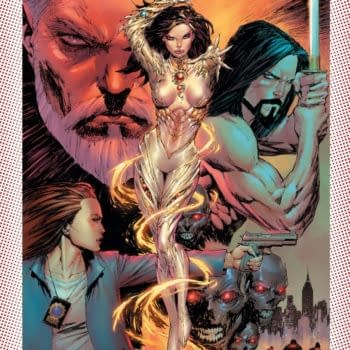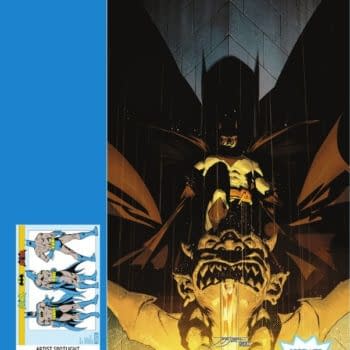Posted in: Comics | Tagged: Comics, digital, entertainment, mark waid, todd allen
Mark Waid's Introduction To Todd Allen's Economics of Digital Comics

The more I learn, the less I know.
This year, I celebrate my 30th anniversary as a comics industry professional. Over the course of my career, I've worked for every major publisher and most minor ones. I've been a writer, a publisher, an editor, a colorist, and more. I learned the nuts and bolts of for-print production back when we were using stats and X-Acto knives, and I've since become moderately proficient with their modern-day equivalents, Photoshop and Illustrator. I've been a PR copywriter and a retailer who owns his own comic book stores. There is literally no facet of this business I haven't blundered my way through with some varying degree of skill…so when I decided to move my creative focus from print to the emerging digital medium a few years ago, I figured I already knew most of what I needed to know and that the transition would be cake for a man of my experience.
Ah, hubris.
In 2012, with my business partners John (Leverage, The Librarians) Rogers and Lori Matsumoto, I launched Thrillbent.com as a built-from-scratch digital comics web portal. "How hard could this be?", I asked no one who could have set me straight. Immediately, my modest dream of simply taking standard comics pages and cutting them in half on the horizontal to fill a portrait-shaped screen expanded as we began experimenting with impossible-in-print storytelling techniques like having dialogue and captions on a static image shift and change at the turn of a page, or playing with cinematic rack-focus transitions, or leading the eye back and forth across a screen to convey moments that couldn't be conveyed on paper. Immediately, we were all taken with this new storytelling language we were helping to invent. I truly thought we were going to conquer the world.

Don't get me wrong; that's not the trumpet of surrender I'm sounding. We and other digital pioneers like us have enjoyed enough success to keep pushing forward. The overall state of digital comics is far more optimistic and exciting than I'd dreamed it could be. I'm simply admitting that I set out in that world bereft of a map and–my hand to God–I would be lost without Todd Allen. The book you're (literally or figuratively) holding in your hands at this moment is testament to that. With painstaking research and by asking all the right questions of all the right players, Allen has created the single most useful document I can imagine having at this point in time. You can't possibly come away from reading it without learning a great deal about the current state of comics publishing across all media. Hell, I couldn't get three pages without discovering new insights or reframing my point-of-view. I personally feel as if I have a much stronger sense of direction having read Allen's analyses, and it benefits my work and my business.
The more I learn, the less I know. Luckily, Todd Allen is here to help me bridge that gap.
Economics of Digital Comics by Todd Allen can be purchased at the link.
Photo of Mark Waid courtesy of the great Seth Kushner.












